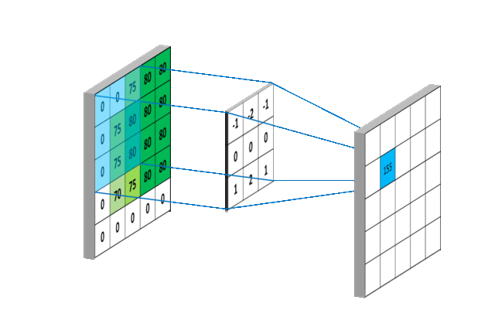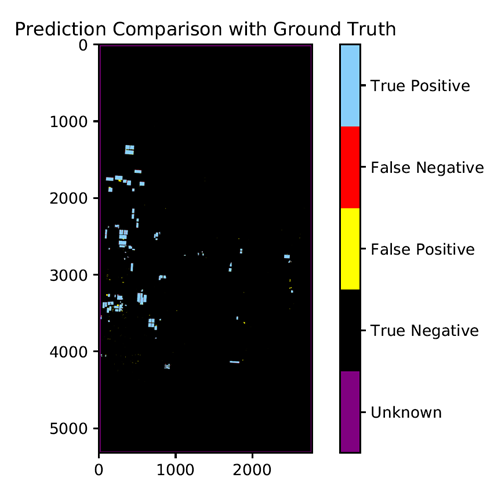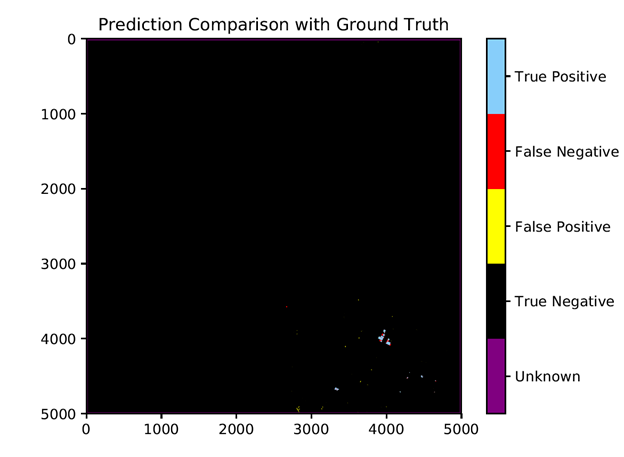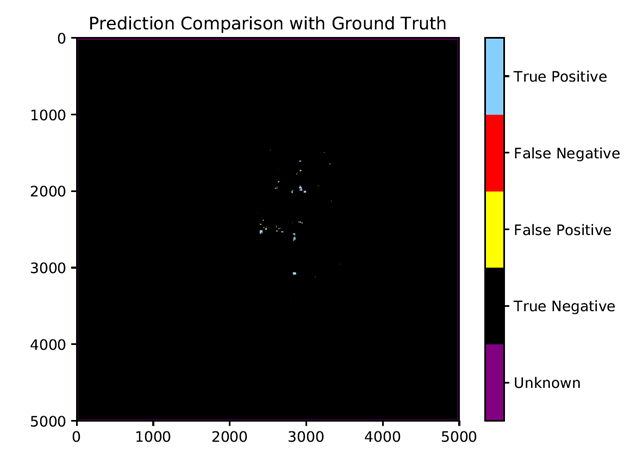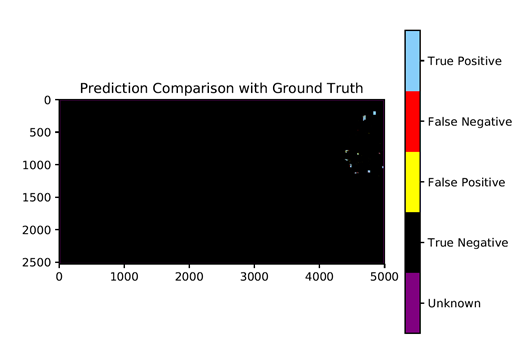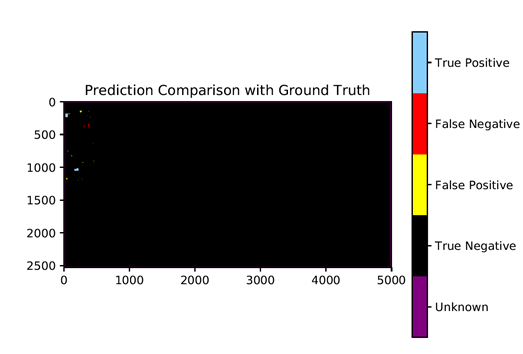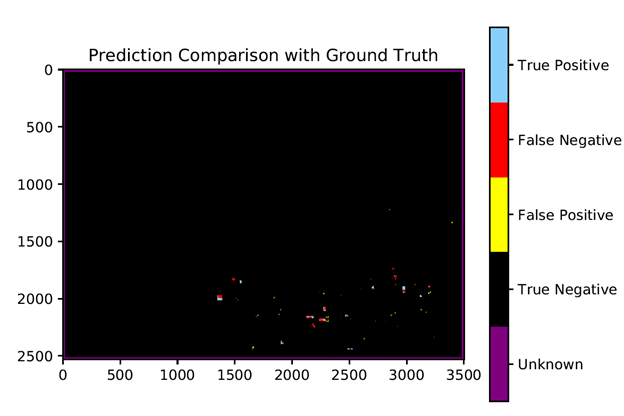Getting started
Why are we conducting this survey?
Thank you for taking a few minutes to participate in the 2021 Census. The information you provide is converted into statistics used by communities, businesses and governments to plan services and make informed decisions about employment, education, health care, market development and more.
Your answers are collected under the authority of the Statistics Act and kept strictly confidential. By law, all residents living in facilities and establishments must be included in the 2021 Census.
Statistics Canada makes use of existing sources of information such as immigration, income tax and benefits data to ensure the least amount of burden is placed on respondents.
Make sure you count all residents into Canada's statistical portrait, and complete the census questionnaire today.
Your information may also be used by Statistics Canada for other statistical and research purposes.
Your participation in this survey is required under the authority of the Statistics Act.
Other important information
Authorization to collect this information
Data are collected under the authority of the Statistics Act, Revised Statutes of Canada, 1985, Chapter S-19.
Confidentiality
By law, Statistics Canada is prohibited from releasing any information it collects that could identify any person, business, or organization, unless consent has been given by the respondent, or as permitted by the Statistics Act. Statistics Canada will use the information from this survey for statistical purposes only.
Record linkages
To enhance the data from this survey and to reduce the reporting burden, Statistics Canada may combine the acquired data with information from other surveys or from administrative sources.
Facility and contact information
1. Verify or provide the facility name and correct where needed.
2. Verify or provide the contact information of the designated facility contact person for this questionnaire and correct where needed.
Note: The designated contact person is the person who should receive this questionnaire. The designated contact person may not always be the one who actually completes the questionnaire.
- First name
- Last name
- Title
- Preferred language of communication
- Mailing address (number and street)
- City
- Province, territory or state
- Postal code or ZIP (Zone Improvement Plan) code
Example : A9A 9A9 or 12345-1234
- Country
- Email address
Example : user@example.gov.ca
- Telephone number (including area code)
Example: 123-123-1234
- Extension number (if applicable)
3. Is this the current civic address of this facility?
Note: If the address below is missing or incomplete, please answer No and provide the complete address.
- Yes
- No
- Please enter the correct civic address of this facility.
- Civic Number
- Suffix
- Street Name
- Type
- Direction
- City
- Province/territory
Facility information
The following questions will help us better understand the nature of this facility.
1. Does this facility allow for persons to stay overnight?
This includes patients, residents, clients, staff, owners, managers and their family members.
Dwelling types
2. Which of the following best describes this facility?
Note: Press the help button (?) for additional information.
- Hospital
- If selected, go to Q5.
- Is this facility licensed as a hospital?
- Nursing home or residence for senior citizens
- What levels of service are provided to residents at this facility?
- Extended health care services (professional health care monitoring, nursing care and supervision 24 hours a day). Residents are not independent in most activities of daily living.
- Support services or assisted living services (meals, housekeeping, laundry, supervision of medication, assistance bathing or dressing, etc.), but no extended health care services. Residents are independent in most activities of daily living.
- Extended health care services to some residents, but only support services or assisted living services to other residents.
e.g., a facility that is a mix of both a nursing home and a residence for senior citizens.
- No care or services are provided to residents
- If selected, exit survey.
- Residential care facility, such as a group home for persons with disabilities or addictions
- Is this facility for:
Select all that apply.
- Primarily children or minors
- Persons with psychological disabilities
- Persons with an addiction
- Persons with physical challenges or disabilities
- Persons who are developmentally delayed
- Persons with other disabilities or addictions
- Specify the other types of persons at this facility:
- Shelter
- Who does this shelter primarily serve?
- Homeless persons
- Ex-inmates in halfway houses
- Abused women and their children
- Refugees and asylum seekers
- Other persons
- Specify who this facility primarily serves
- Correctional or custodial facility
- What type of facility is this?
- Federal correctional facility
- Young offenders' facility
- Provincial or territorial custodial facility
- Jail or police lock-up facility
- Lodging or rooming house
- If selected, exit survey.
- Religious establishment such as a convent, monastery or seminary
- Hutterite colony
- If selected, exit survey.
- Establishment with temporary accommodation services such as a hotel, campground, YMCA/YWCA, Ronald McDonald House or hostel
- What type of establishment is this?
- Hotel, motel or tourist establishment
- Campground or park
- Another establishment with temporary accommodations services such as a YMCA/YWCA, Ronald McDonald House or hostel
- Other establishment such as a school residence, military base, work camp or vessel
- What type of establishment is this?
- A school residence or training centre residence
- A military base
- A commercial vessel
- A work camp
- A government vessel
- Other type of establishment
- None of the above
Go to Q6, unless otherwise specified.
You previously selected "none of the above". The following questions will help determine if this facility should be included in this survey or not.
3. Does this facility provide any care or services to its occupants?
- Yes
- No
- Does this facility share any common amenities such as a kitchen or bathrooms with its occupants?
4. According to the information provided, this facility meets the requirements and must be included in this survey. Please indicates which category best describes this facility.
Note: Press the help button (?) for additional information.
- Hospital
- If selected, go to Q5.
- Is this facility licensed as a hospital?
- Nursing home or residence for senior citizens
- What levels of service are provided to residents at this facility?
- Extended health care services (professional health care monitoring, nursing care and supervision 24 hours a day). Residents are not independent in most activities of daily living.
- Support services or assisted living services (meals, housekeeping, laundry, supervision of medication, assistance bathing or dressing, etc.), but no extended health care services. Residents are independent in most activities of daily living.
- Extended health care services to some residents, but only support services or assisted living services to other residents.
e.g., a facility that is a mix of both a nursing home and a residence for senior citizens.
- Residential care facility, such as a group home for persons with disabilities or addictions
- Is this facility for:
Select all that apply.
- Primarily children or minors
- Persons with psychological disabilities
- Persons with an addiction
- Persons with physical challenges or disabilities
- Persons who are developmentally delayed
- Persons with other disabilities or addictions
- Specify the other types of persons at this facility
- Shelter
- Who does this shelter primarily serve?
- Homeless persons
- Ex-inmates in halfway houses
- Abused women and their children
- Refugees and asylum seekers
- Other persons
- Specify who this facility primarily serves
- Correctional or custodial facility
- What type of facility is this?
- Federal correctional facility
- Young offenders' facility
- Provincial or territorial custodial facility
- Jail or police lock-up facility
- Lodging or rooming house
- If selected, exit survey.
- Religious establishment such as a convent, monastery or seminary
- Hutterite colony
- If selected, exit survey.
- Establishment with temporary accommodation services such as a hotel, campground, YMCA/YWCA, Ronald McDonald House or hostel
- What type of establishment is this?
- Hotel, motel or tourist establishment
- Campground or park
- Another establishment with temporary accommodations services such as a YMCA/YWCA, Ronald McDonald House or hostel
- Other establishment such as a school residence, military base, work camp or vessel
- What type of establishment is this?
- A school residence or training centre residence
- A military base
- A commercial vessel
- A work camp
- A government vessel
- Other type of establishment
Go to Q6, unless otherwise specified.
5. What services are provided at this facility?
- Short-term care
- Long-term care
- Both short-term and long-term care
Maximum capacity
6. What is the maximum number of persons who can stay overnight at this facility?
If the number of persons is unknown, provide the number of rooms. If the exact number is unknown, enter your best estimate.
- Maximum number
- Persons or rooms
- If establishment with temporary accommodation services or other establishment was selected in Q2 or Q4, go to Q34.
Residential information
All residents of shelters should be counted in this question.
The census counts people at the place where they usually live.
7. How many people are living at this address and consider it to be their main residence, even if they are temporarily away?
This includes persons who have lived at this facility for 6 months or more (admitted on or before November 11, 2020) or those for which the facility is their only residence in Canada (i.e. they have no other residence).
Include live-in staff, owners and managers.
Exclude any persons who live in a private dwelling attached to your facility.
Note: Press the help button (?) for additional information.
- Number of persons
- If response is 0, skip Q12 to Q14.
8. Is there anyone who is staying at this address temporarily and who has their main residence located at another address in Canada?
9. Is there anyone who is staying at this address and who is a resident of another country visiting Canada?
Private dwelling attached to the facility
10. Other than this facility, are there any private dwellings at this address?
A private dwelling is a separate set of living quarters with a private entrance either from outside the building or from a common hall, lobby, vestibule or stairway inside the building. The entrance to the dwelling must be one that can be used without passing through the living quarters of other persons.
Include only dwellings:
- with the same civic address as the facility, but with a different apartment or unit number
- that are not part of the commercial, institutional or communal purpose of the facility (i.e. persons in these dwellings do not receive any care or services from the facility)
Exclude any dwellings occupied by live-in employees, owners and managers.
11. Indicate the number of occupants who are currently living in private dwellings attached to this facility.
Exclude live-in staff, owners and managers.
Include only persons who do not receive any care or services from this facility.
File containing information about residents
As part of the Canadian Census of Population, Statistics Canada is collecting the following information from residents in facilities such as yours.
This includes:
- name
- other address if main residence is elsewhere in Canada
- date of admission
- date of birth
- age
- sex at birth
- gender
- legal marital status
- common-law status
- status at facility and/or relationship between persons living in the same unit
- languages
- Canadian military experience
12. Does this facility keep electronic records that contain some or all of this information for all persons that consider this facility to be their main residence (i.e. those who have lived here for 6 months or more (admitted on or before November 11, 2020) or those for which this facility is their only residence in Canada)?
Include all persons indicated in question 7, i.e. usual residents, live-in staff, owners and managers.
Attach files
13. Please attach your records in any file format, even if some of the required information is not available.
Note: After 2 hours of inactivity, your session will time out. You will not be able to access any unsaved information. Please click on Save and finish later below before proceeding in order to save your responses up to this point. You will be asked to create a password and a security question and then you will be given the option to resume the questionnaire.
To attach files
- Press the Attach files button.
- Choose the file to attach. Multiple files can be attached.
Note:
- Each file must not exceed 5MB.
- The attachments combined must not exceed 50MB.
- The name and size of each file attached will be displayed on the page.
14. In the questionnaire provided below, please respond to each census question to the best of your ability, for all persons that consider this facility to be their main residence (i.e., those who have lived here for 6 months or more (admitted on or before November 11, 2020) or those for which this facility is their only residence in Canada).
Include all persons indicated in question 7, i.e., usual residents, live-in staff, owners and managers.
Note: After 2 hours of inactivity, your session will time out. You will not be able to access any unsaved information. Please click on Save and finish later below before proceeding in order to save your responses up to this point. You will be asked to create a password and a security question and then you will be given the option to resume the questionnaire.
To complete the questionnaire
Download the questionnaire, complete it and save the final version to your computer.
To attach and submit your competed questionnaire
Return to this page and follow the instructions below. Once your files are attached, use the navigation buttons to submit your questionnaire.
To attach files
- Press the Attach files button.
- Choose the file to attach. Multiple files can be attached.
Note:
- Each file must not exceed 5MB.
- The attachments combined must not exceed 50MB.
- The name and size of each file attached will be displayed on the page.
Files containing information about the occupants of units attached to the facility
As part of the Canadian Census of Population, Statistics Canada is collecting the following information from all Canadians, including people living in private dwellings attached to this facility.
This includes:
- name
- date of birth
- age
- sex at birth
- gender
- legal marital status
- common-law status
- relationship between persons living in the same unit
- languages
- Canadian military experience
15. In the questionnaire provided below, please respond to each census question to the best of your ability, for all persons living in a private dwelling that has the same civic number as this facility, but does not receive any care or services from your facility.
Include all persons indicated in question 11, i.e., only persons who do not receive any care or services from this facility.
Exclude live-in staff, owners and managers.
Note: Apartment or unit number must be different.
Note: After 2 hours of inactivity, your session will time out. You will not be able to access any unsaved information. Please click on Save and finish later below before proceeding in order to save your responses up to this point. You will be asked to create a password and a security question and then you will be given the option to resume the questionnaire.
To complete the questionnaire
Download the questionnaire, complete it and save the final version to your computer.
To attach and submit your competed questionnaire
Return to this page and follow the instructions below. Once your files are attached, use the navigation buttons to submit your questionnaire.
To attach files
- Press the Attach files button.
- Choose the file to attach. Multiple files can be attached.
Note:
- Each file must not exceed 5MB.
- The attachments combined must not exceed 50MB.
- The name and size of each file attached will be displayed on the page.
- Attach file
- If establishment with temporary accommodation services or other establishment was NOT selected in Q2 or Q4, go to Q39.
Residential information
34. The census counts people at the place where they usually live.
Do you know how many people live at this address and consider it to be their only residence in Canada (i.e., they have no other residence)?
Include live-in staff, owners and managers.
Note: Press the help button (?) for additional information.
35. You previously reported that the number of persons who usually live at this address is unknown. Please provide an estimated number of people for which this establishment is their only residence in Canada.
Include live-in staff, owners and managers.
Note: Press the help button (?) for additional information.
- Estimated number of people
- or Don't know
- If don't know, exit survey.
Private dwellings attached to the facility
36. Other than this establishment, are there any private dwellings at this address?
A private dwelling is a separate set of living quarters with a private entrance either from outside the building or from a common hall, lobby, vestibule or stairway inside the building. The entrance to the dwelling must be one that can be used without passing through the living quarters of other persons.
Include only dwellings:
- with the same civic address as the establishment, but with a different apartment or unit number
- that are not part of the commercial, institutional or communal purpose of the establishment (i.e., persons in these dwellings do not receive any services from the establishment nor share certain common facilities, such as kitchen or bathroom, with the occupants of this establishment).
Exclude any dwellings occupied by live-in employees, owners and managers.
37. Indicate the unit or apartment number for each private dwelling.
The number of units entered on this page should match the number specified in question 36.
Units
38. For each unit number, indicate if they are currently occupied or unoccupied.
Feedback
39. Do you have any comments about this questionnaire?
Please use this section if you have concerns, suggestions or comments to make about:
- the steps to follow or the content of this questionnaire (e.g., a question that was difficult to understand or to answer)
- the characteristics of the online questionnaire (e.g., the navigation, the online help, the design, the format, the size of the text)
- any technical issues encountered.

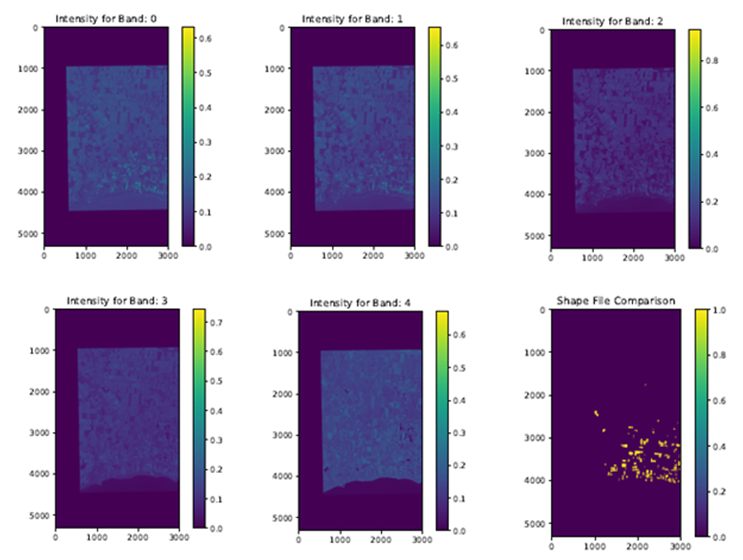 .
.

